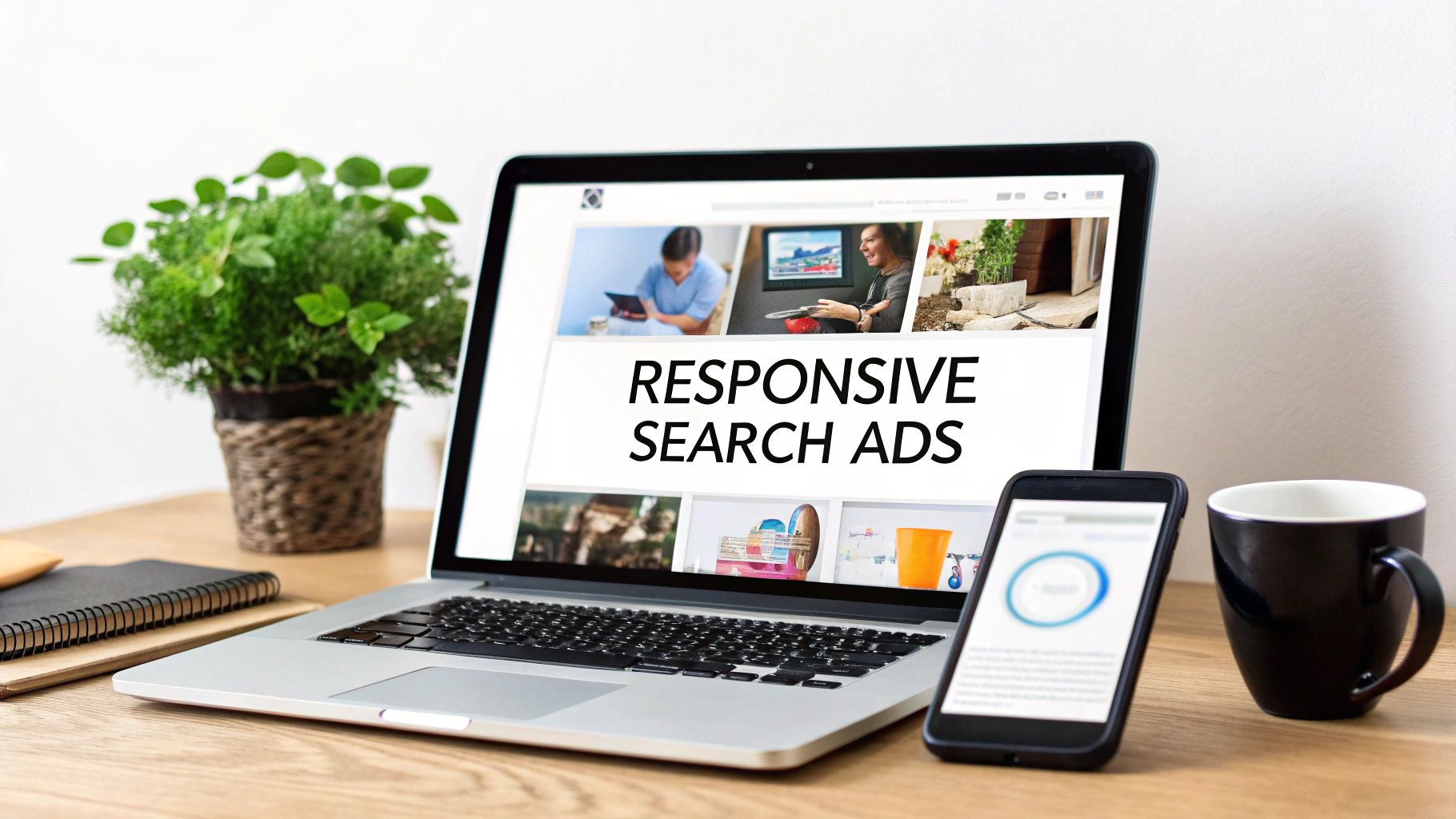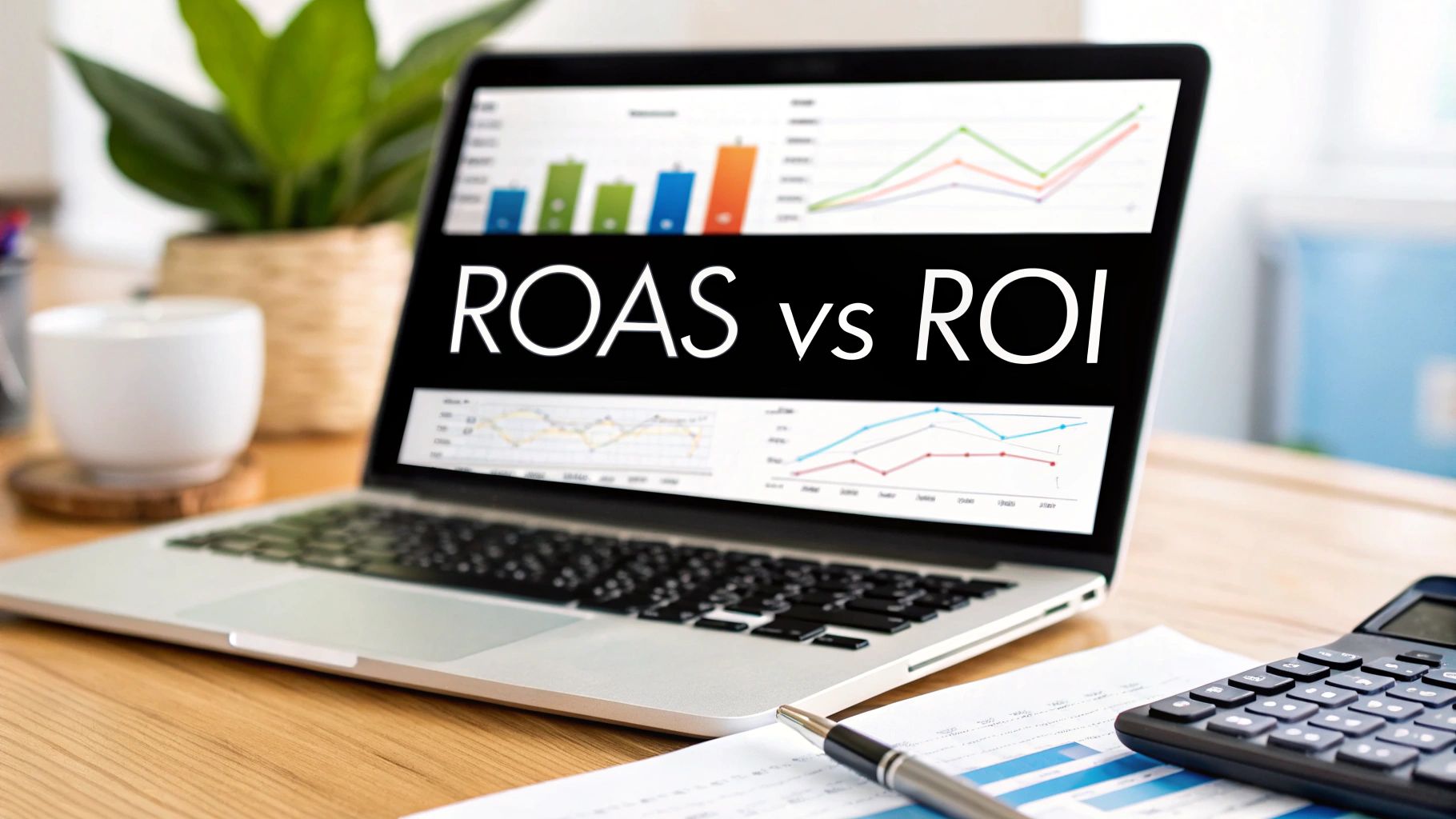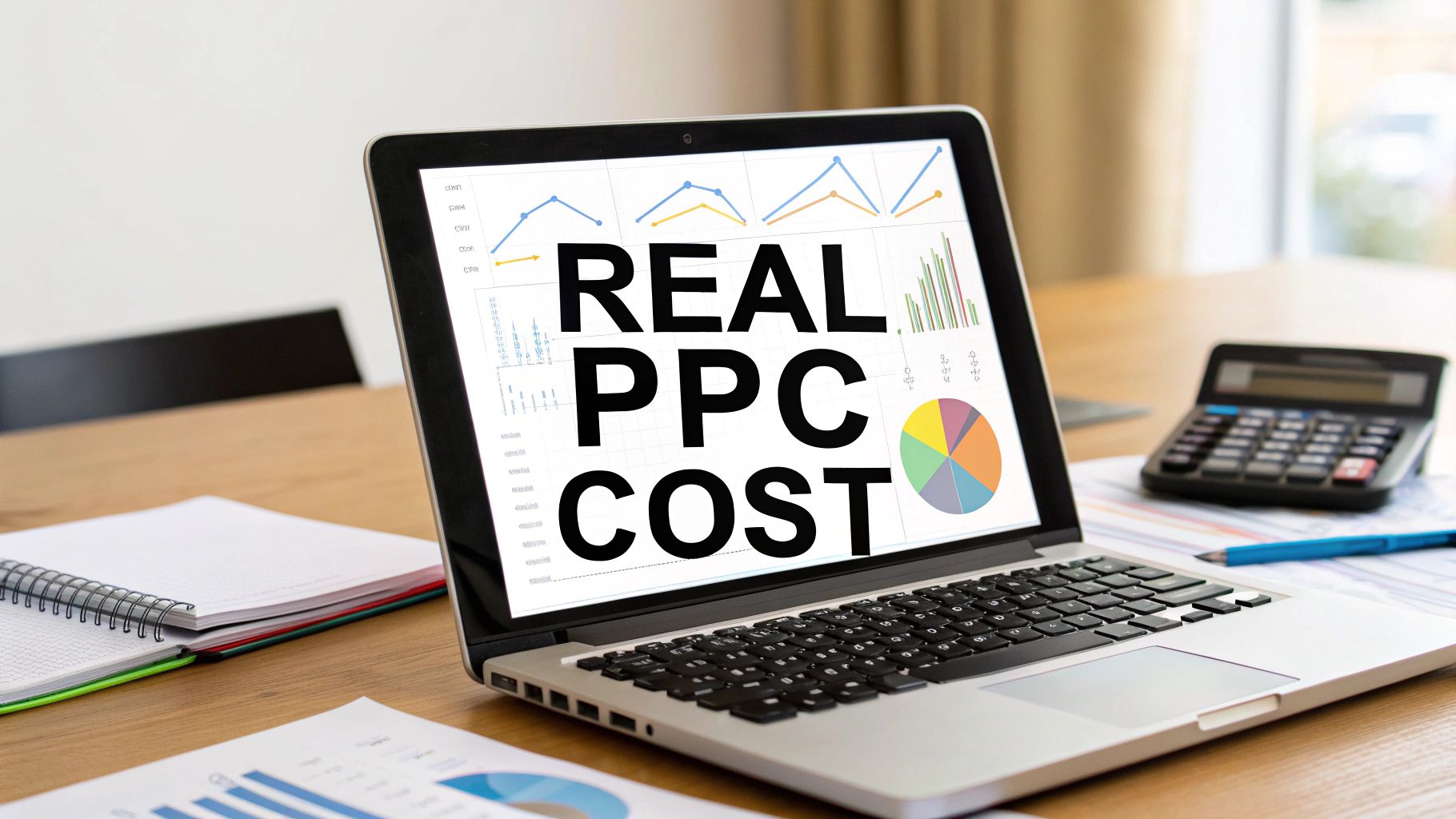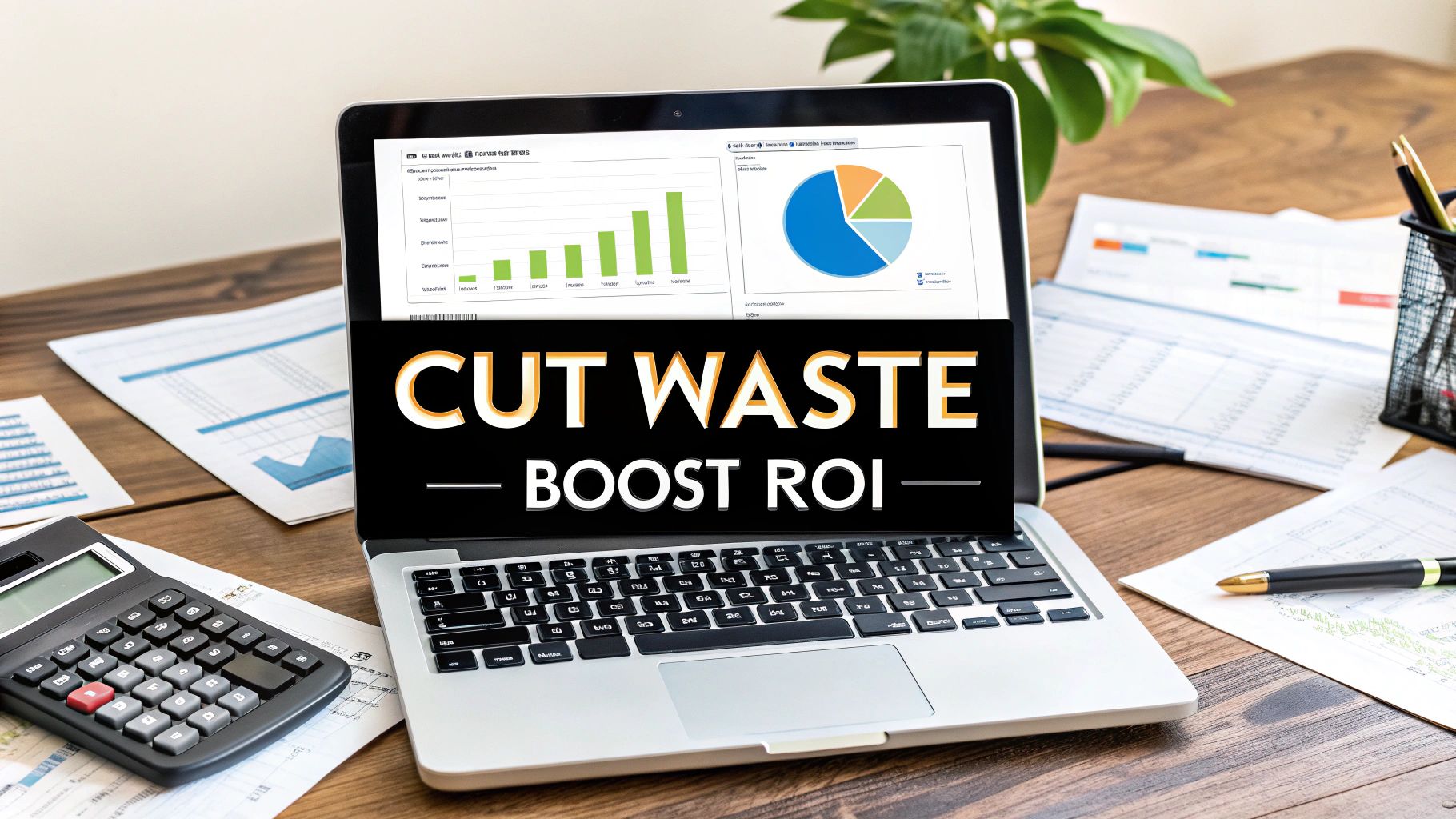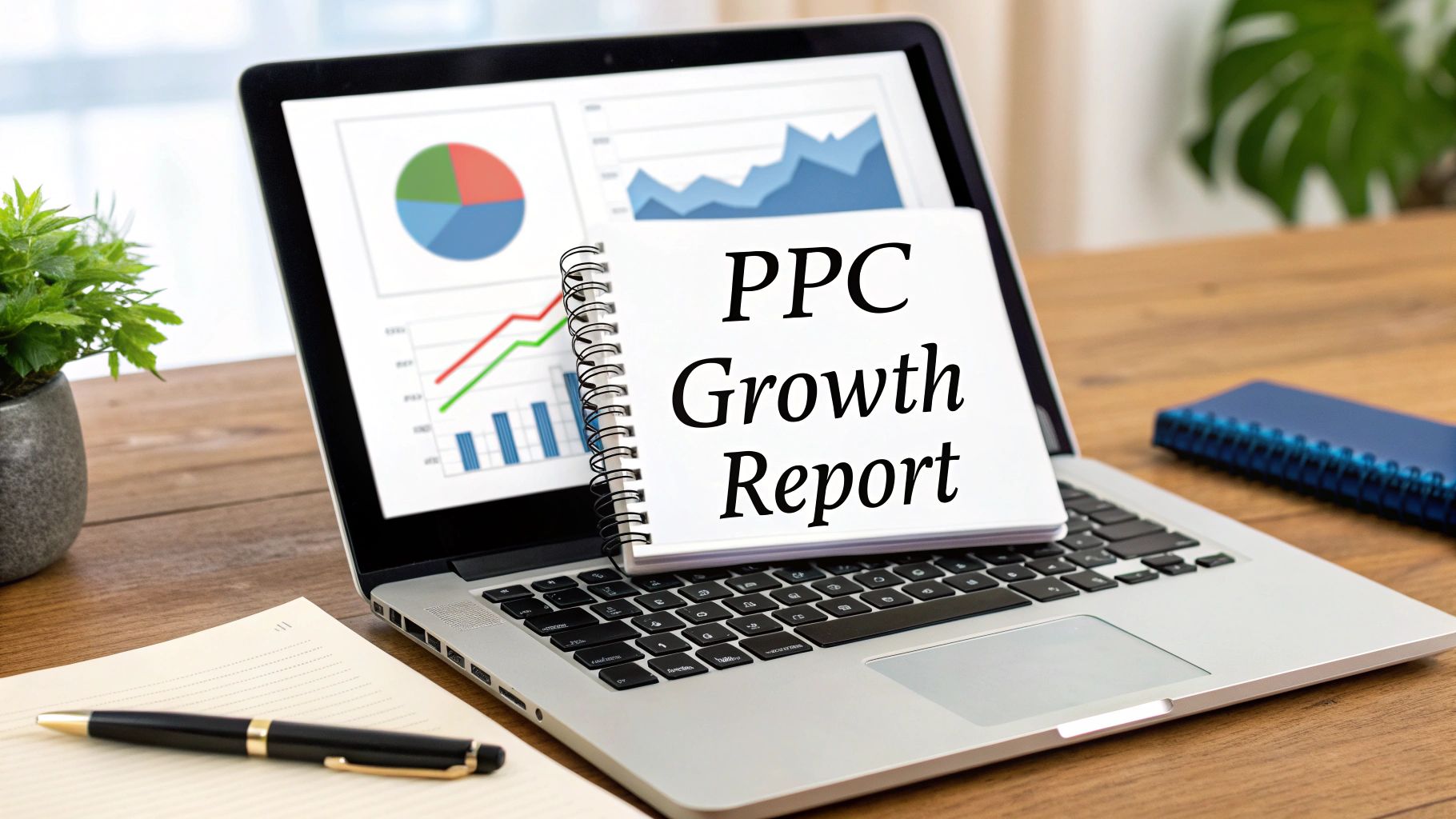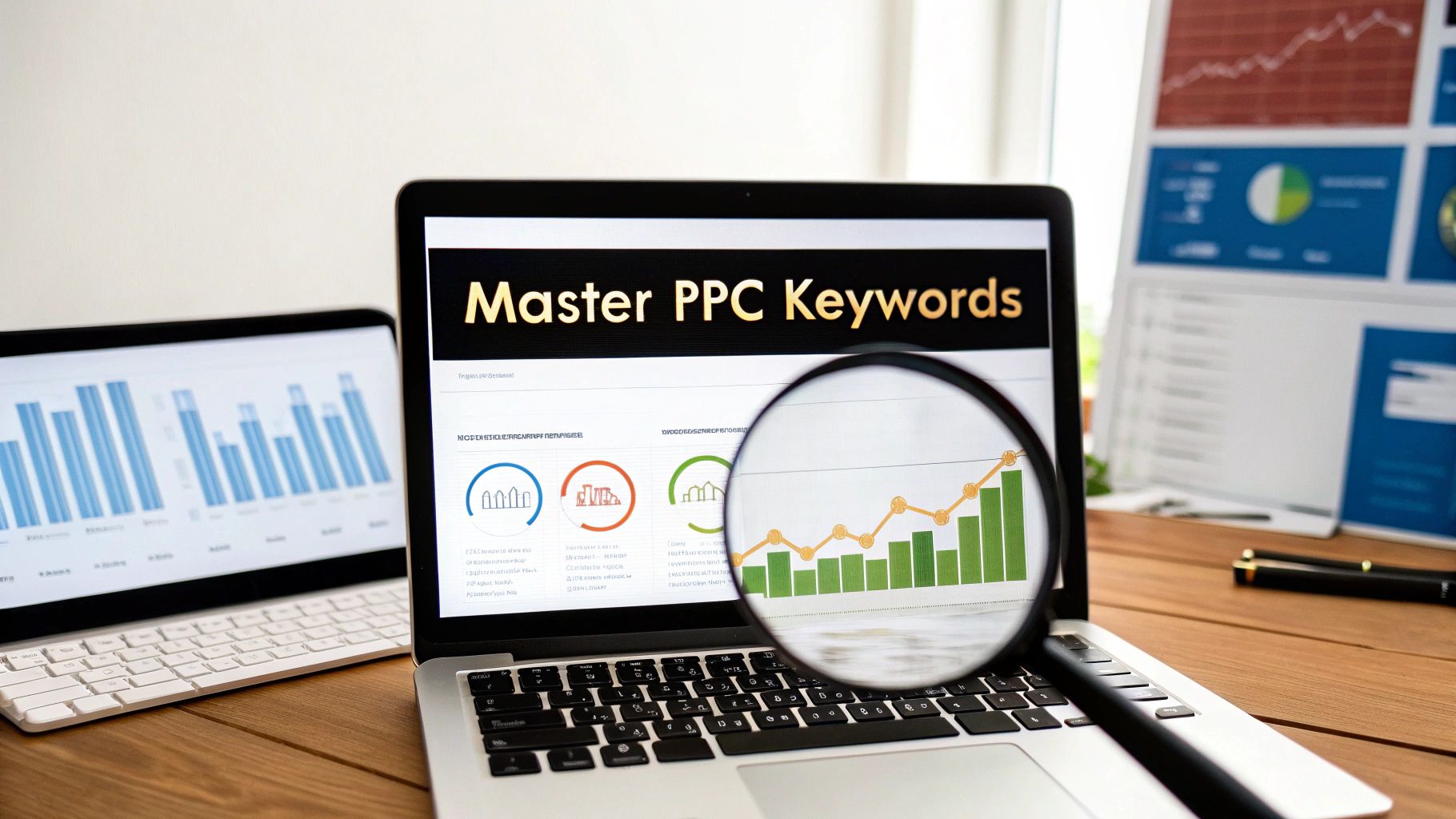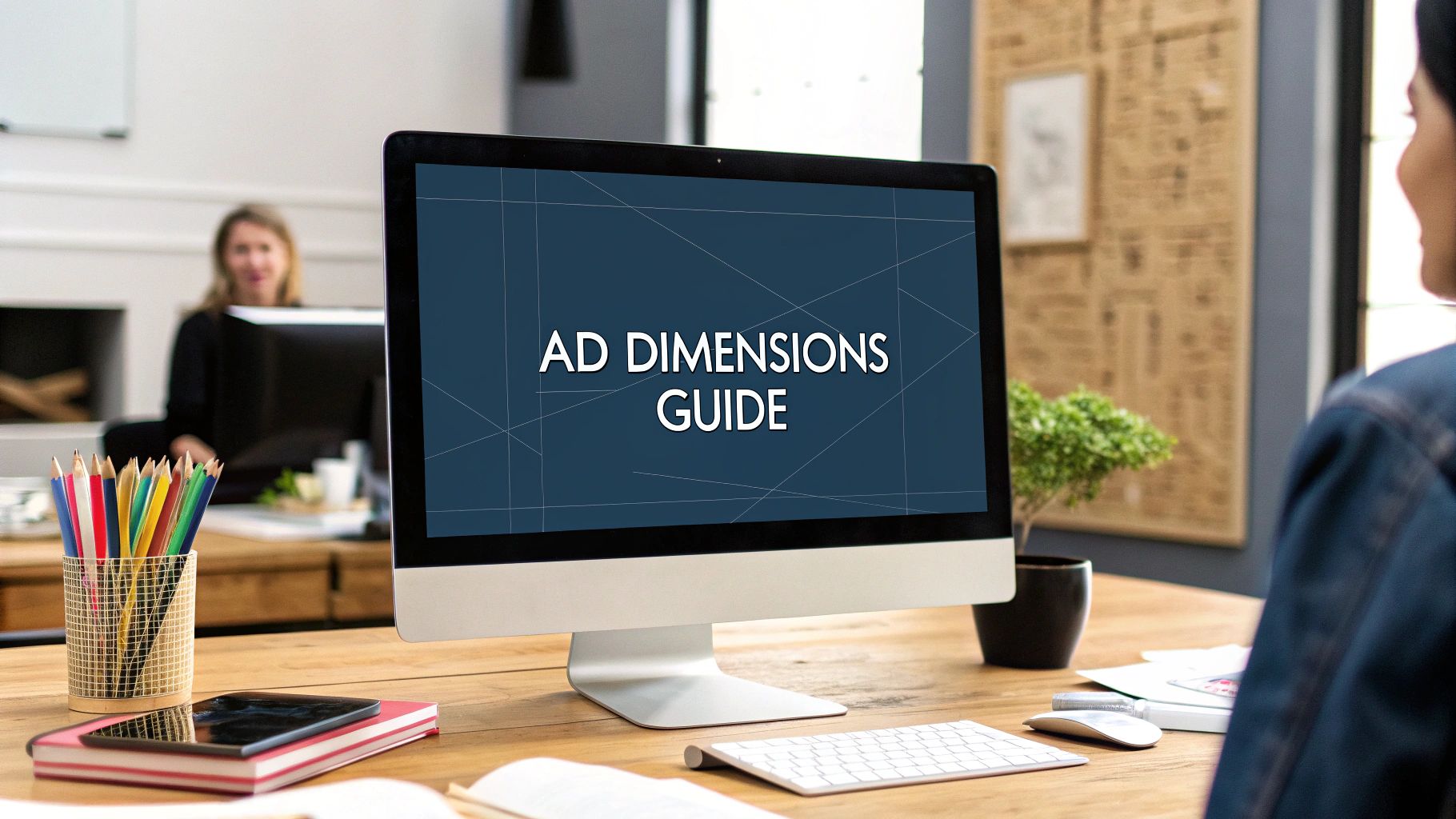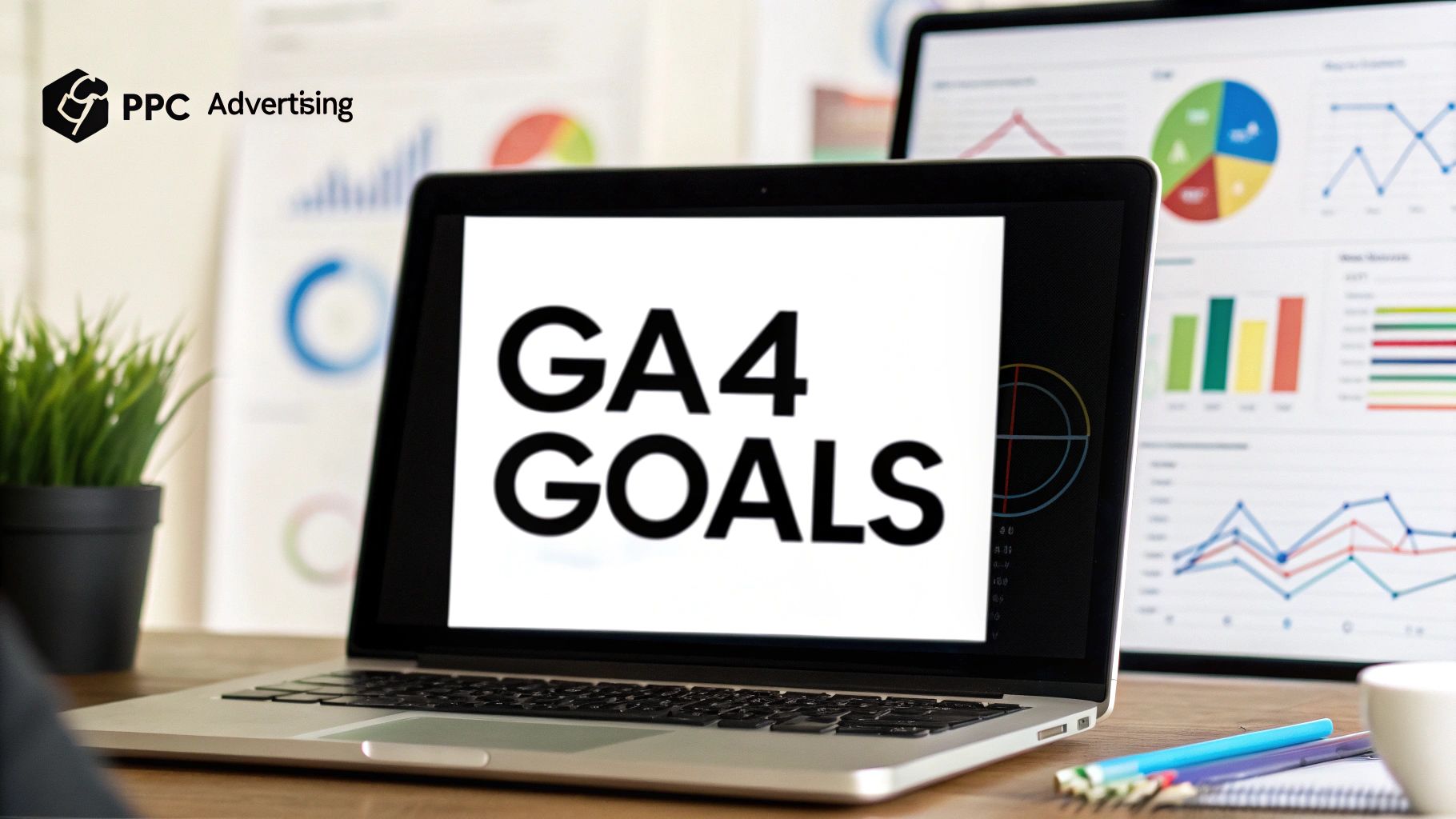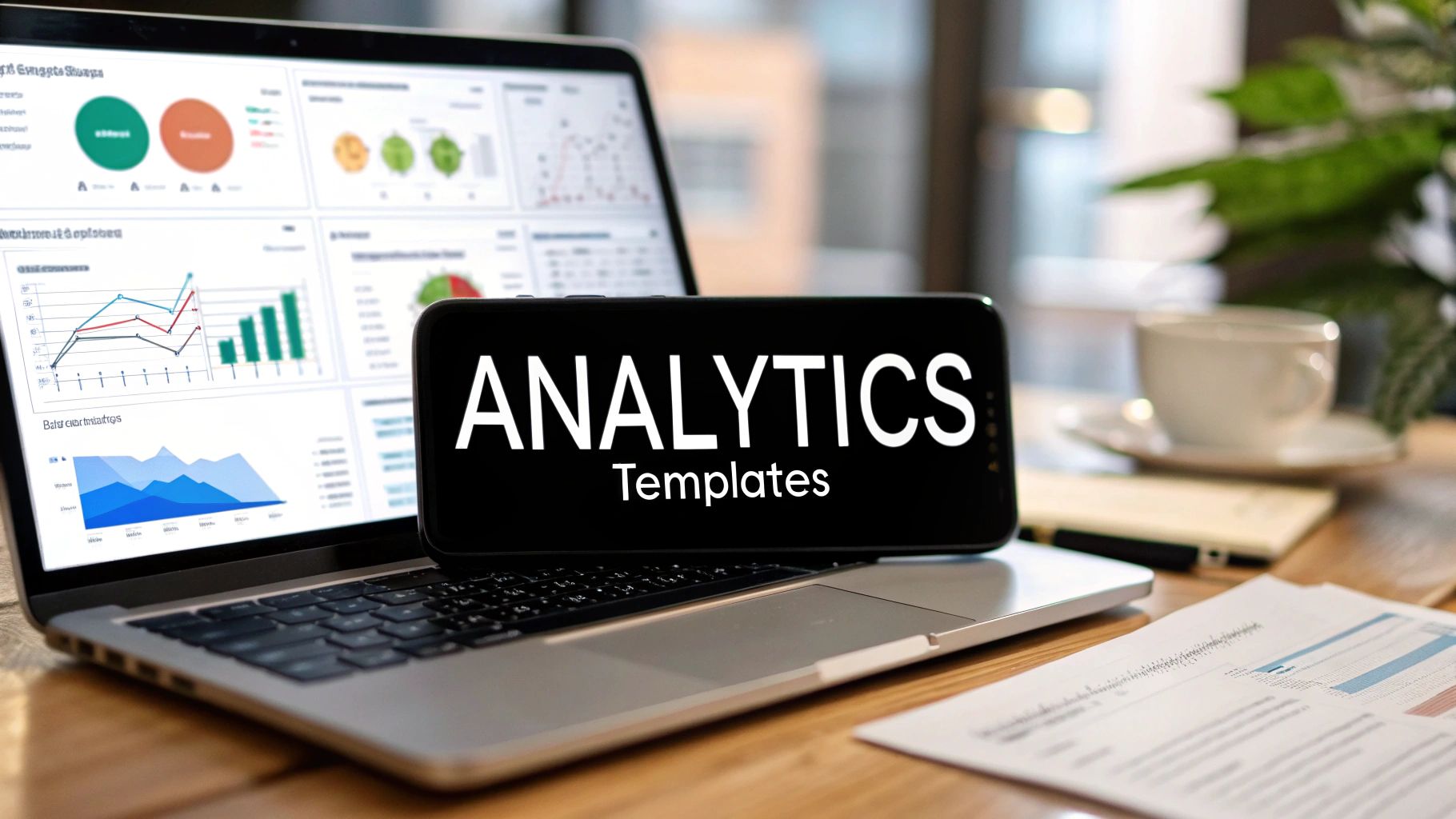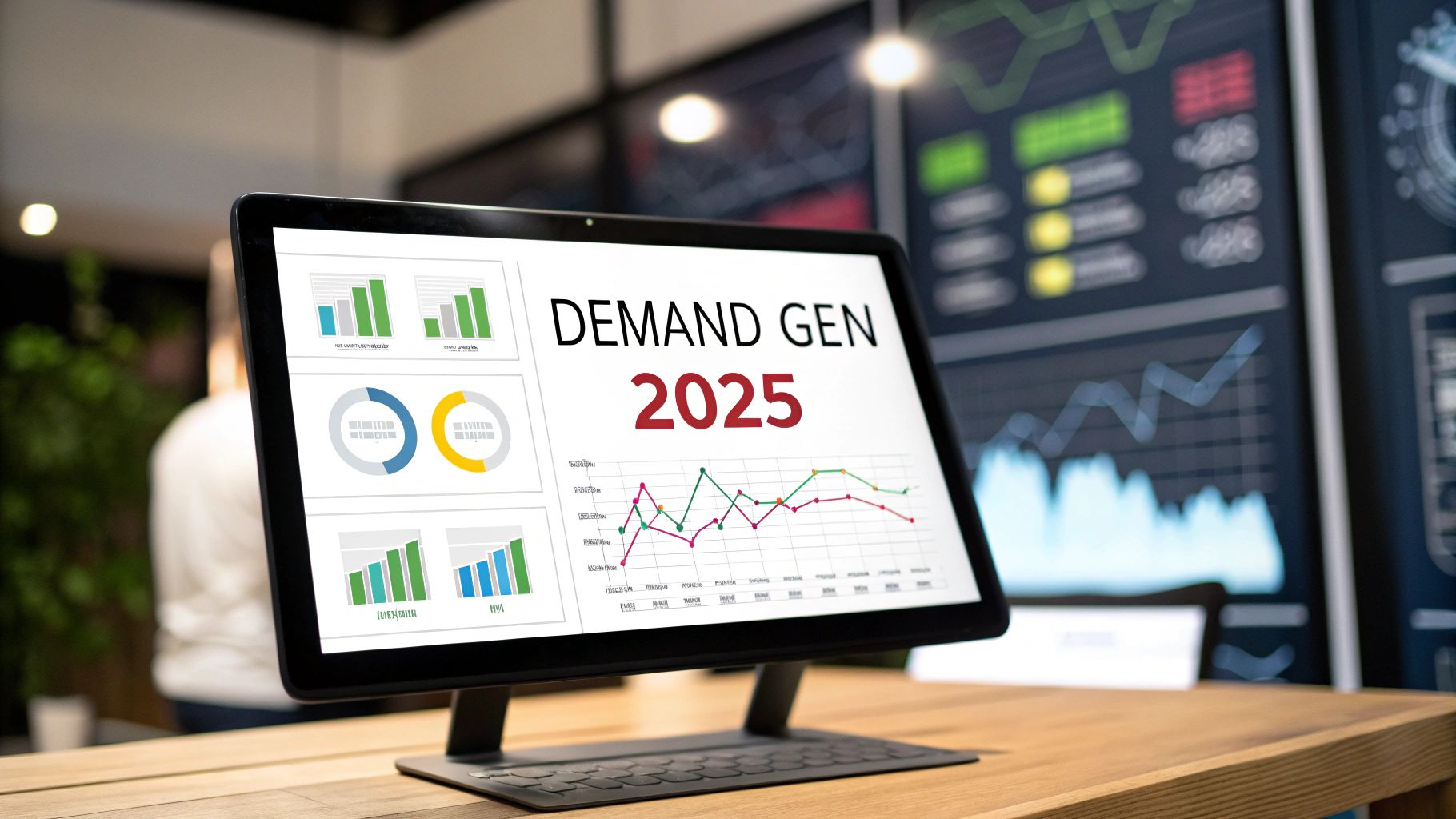Search Ads vs Display Ads: A Consultant's Guide
- Chase McGowan
- Jul 26
- 14 min read
So, you're trying to figure out where to put your money: Google Search Ads or Google Display Ads? This is the first—and most important—decision you'll make. Get it right, and you’re on the path to profit. Get it wrong, and you're just burning cash—a mistake overpriced, bloated agencies make all too often with their clients' money.
Here's the simplest way I can break it down after 15+ years of managing these campaigns directly for my clients:
Search Ads capture existing demand. Someone is actively typing "emergency plumber near me" into Google. They have a problem right now, and they're looking for a solution. This is a "pull" strategy. You're pulling in people who are already raising their hands.
Display Ads create new demand. Someone is browsing their favorite sports blog or watching a YouTube video. They aren't looking for your product, but your ad shows up, planting a seed. This is a "push" strategy. You're pushing your brand in front of people who might need you later.
Understanding this core "pull vs. push" dynamic is everything. It dictates your budget, your creative, and your expectations for performance. It's the kind of fundamental expertise that gets lost when your account is handed off to a junior manager at a large agency.
Choosing Your Ad Strategy: Search vs. Display
Making the right choice here sets the entire foundation for your campaign's performance. A lot of big agencies might push you toward one or the other based on what pads their retainers or fits their templated approach. My job as a consultant is different. I’m here to align your ad spend with the strategy that actually hits your business goals, whether that’s getting the phone to ring today or building a brand that people remember tomorrow.
It all boils down to user intent.
Search ads are reactive. They only show up when a potential customer signals a clear and immediate need by typing a query into Google. Display ads are proactive. They appear across millions of websites, apps, and videos, reaching users based on their interests and online behaviors before they even think to search.
As a consultant, my goal isn't to sell you a service. It's to find the most direct path between your budget and your business objectives. Sometimes that's immediate lead generation with Search; other times, it's long-term brand building with Display. The strategy is tailored to you, not forced into a pre-existing agency model.
For a quick reference, here’s how the two stack up at a high level.
Quick Comparison: Search Ads vs. Display Ads
This table strips away the jargon and gets straight to the point, showing the fundamental differences in function, goals, and user mindset.
Attribute | Search Ads | Display Ads |
|---|---|---|
Core Function | Capture existing demand | Create new demand |
Primary Goal | Drive immediate leads and sales | Build brand awareness and retarget |
User Intent | High ("I need a solution now") | Low ("I'm just browsing content") |
As you can see, they serve very different purposes. One is for harvesting, the other for planting seeds.
Now, let's look at what the performance data tells us. The numbers don't lie, and they paint a very clear picture of where each channel shines.
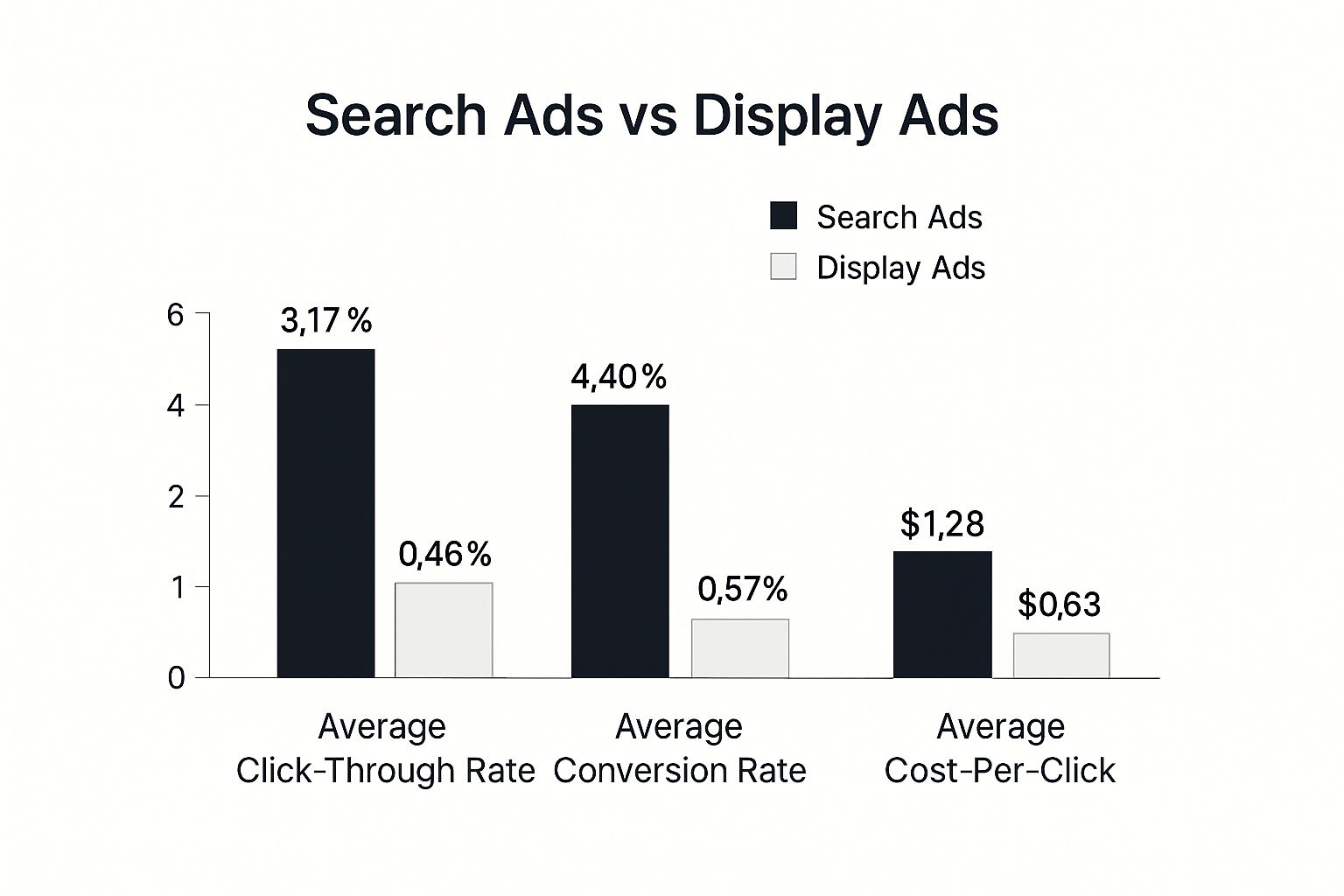
The data is pretty stark. While you'll pay less for a click on the Display Network, you're going to get far higher click-through and conversion rates from Search. Why? Because the intent is baked right in.
This performance gap isn't just an anomaly; it's an industry-wide reality. The average click-through rate (CTR) for Display ads across all industries is a meager 0.46%. Meanwhile, Google Search ads punch way above their weight with an average CTR of 3.17%.
This highlights the core trade-off perfectly. Search ads are built for immediate, intent-driven action. Display ads, on the other hand, are masters of reach and awareness—after all, the Google Display Network can get your brand in front of over 90% of all internet users. Each has its place, but they are not interchangeable.
Audience Intent and Precision Targeting
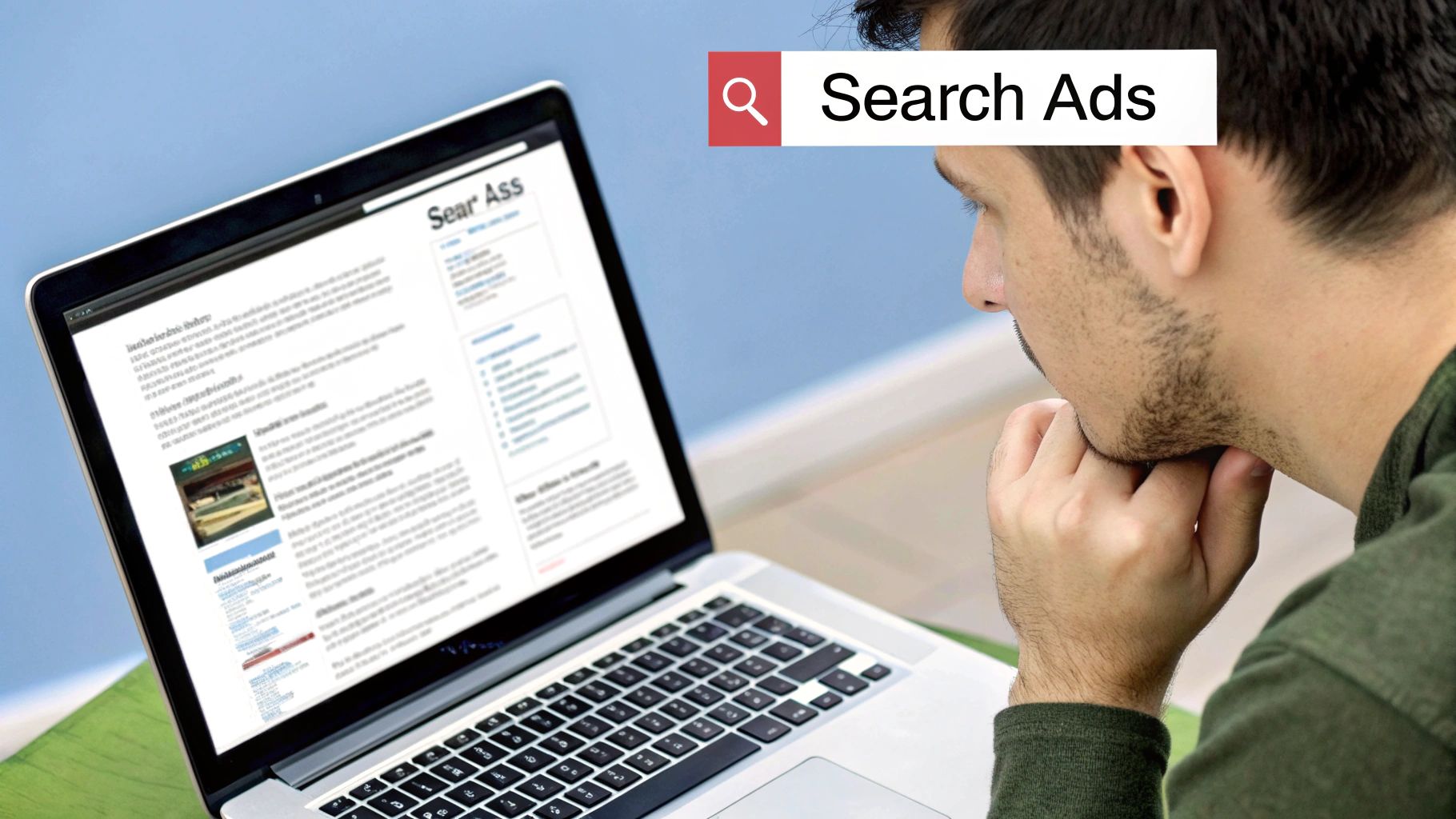
The single biggest factor that determines your return on ad spend isn't your budget—it's how well you connect with the right audience. This is exactly where most bloated agencies stumble. They apply broad, templated strategies that burn through your cash by showing ads to people who will never buy.
My approach is different. It’s surgical, focused entirely on precision and capitalizing on user intent.
Reaching Customers on Search
Search ads are the ultimate tool for capturing high-intent users. These are people actively looking for a solution right now. The goal is to meet them at that exact moment of need. A lazy agency might just bid on a few obvious, broad keywords and call it a day. An expert strategy goes much, much deeper.
A specialized approach to Search uses a multi-layered technique to filter out waste and maximize relevance. It’s not just about what you bid on, but also what you aggressively exclude. This is how we make every dollar work harder.
Strategic Keyword Match Types: We move beyond lazy broad match, using phrase and exact match types to control precisely who sees your ads. This ensures your budget is spent only on the most qualified searchers.
Aggressive Negative Keyword Lists: I build and constantly refine extensive lists of negative keywords. This blocks irrelevant searches from people who are not customers—like job seekers, researchers, or people looking for DIY solutions.
Layering In-Market Audiences: We can tell Google to prioritize users who not only search for your keywords but have also shown recent behavior that screams they're in the market to buy.
This level of detail is the difference between simply getting clicks and actually acquiring profitable customers. It’s a core reason why a focused PPC marketing investment often outperforms other channels when managed by a specialist.
Finding Customers on Display
Display ad targeting is a more proactive game, but it demands just as much precision to be effective. The goal is to build an audience profile that perfectly mirrors your ideal customer and then reach them while they’re browsing their favorite sites. A large agency might just select a few generic interests and cross their fingers.
An expert consultant builds custom audiences from the ground up. Instead of telling Google to find "car enthusiasts," we can build an audience of people who recently visited specific auto review sites, use certain competitor apps, and have searched for terms related to "new car financing." That’s the difference between hoping and knowing.
This is absolutely critical because display ads are fighting for attention in a crowded space. The average conversion rate for display ads is a mere 0.77%. That statistic alone highlights the challenge of turning a passive glance into a paying customer.
Compare that to the sheer financial power of intent-driven advertising, where Google Search alone generated $175 billion in global ad revenue in 2023. My job is to defy those low display averages by building smarter, hyper-relevant campaigns from day one.
Getting Real About Cost and Campaign Economics
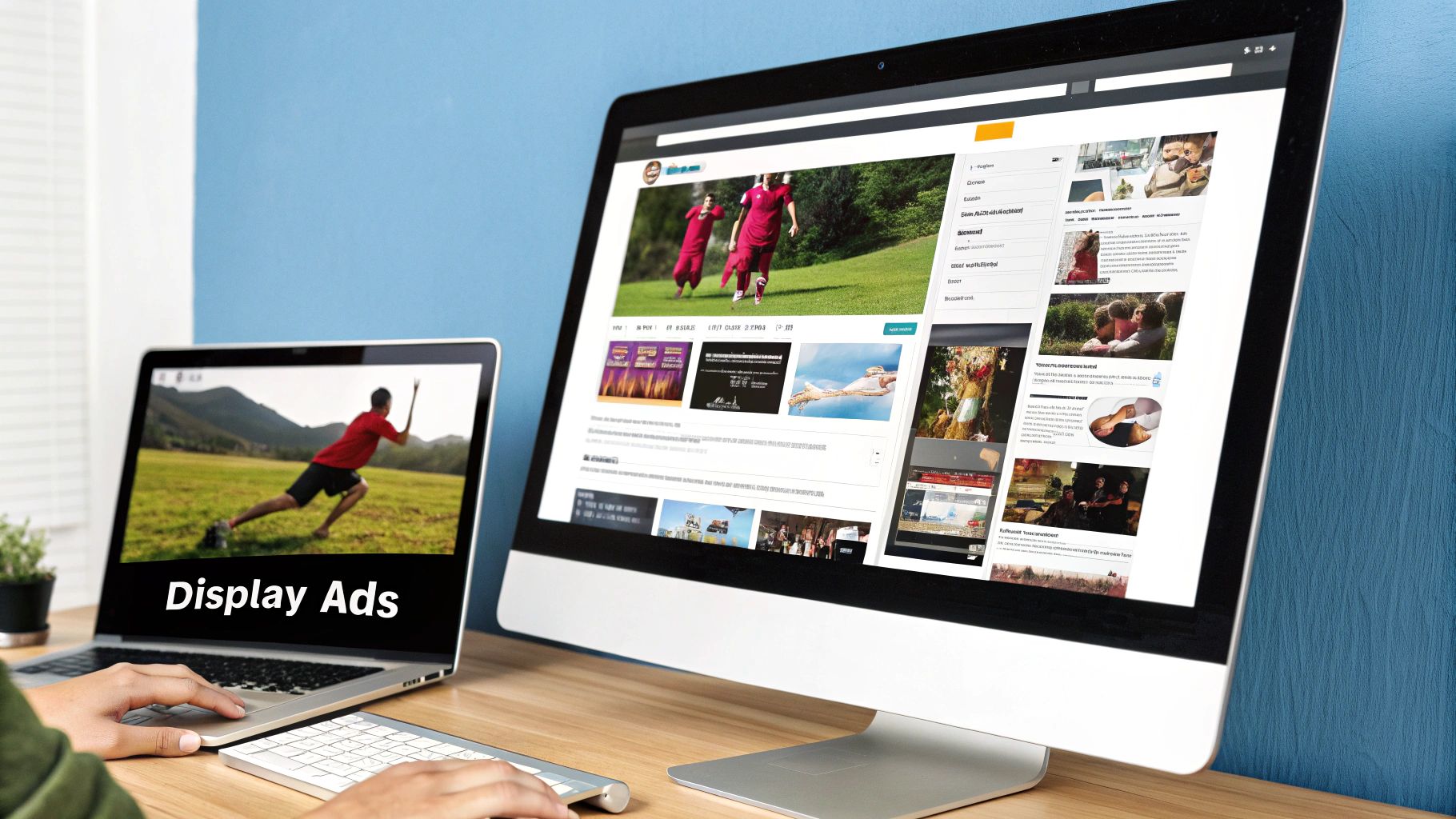
Let's cut through the noise. Big agencies love to bury poor performance in confusing reports and bundled management fees. My job is to make the economics of your ad spend crystal clear, because understanding the fundamental cost differences between Search and Display is the key to smart budget allocation. Every dollar should be a direct, transparent investment in your growth.
Search Ads almost always come with a higher average Cost-Per-Click (CPC). This isn't a bug; it's a feature. You're paying a premium to show up at the exact moment a customer is signaling their intent to buy. Think of it as prime real estate—you pay more for the storefront where shoppers are already lined up with wallets in hand.
Display Ads, on the other hand, have a much lower CPC. This is because you're reaching a broader audience that isn't actively searching for your product right now. The cost per click (and impression) is naturally lower. Here, the game is often about Cost-Per-Mille (CPM), or the cost per thousand views, because the primary goal is building awareness, not driving an immediate sale.
Focus on What Actually Drives Your Business
Too many agencies get distracted by vanity metrics like clicks and impressions. I couldn't care less about cheap clicks. My focus is entirely on your Return on Ad Spend (ROAS).
A low CPC is useless if those clicks don't convert into revenue. Conversely, a high CPC can be incredibly profitable if it brings in high-value customers who buy again and again.
We'll zero in on the numbers that directly impact your bottom line:
Cost Per Acquisition (CPA): How much does it actually cost to land one new customer?
Return on Ad Spend (ROAS): For every dollar we put in, how many dollars in revenue do we get back?
Customer Lifetime Value (LTV): What is the total profit we can expect from a single customer over time?
A bloated agency might brag about a campaign that got thousands of cheap clicks. I see that as a potential bonfire of cash. The real win is a campaign with a precisely calculated CPA that proves profitability and fuels sustainable growth.
Understanding these core financial drivers is everything. It's how we build a marketing engine where ad spend isn't just an expense, but a predictable investment in your company's future. To dig deeper, check out some of the top search engine marketing strategies to boost your ROI that prioritize profitability above all else.
Ad Formats and Creative That Actually Converts
Your ads are your digital handshake. Get them wrong, and you're not just wasting money—you're making a terrible first impression. This is the classic pitfall of big, impersonal agencies that recycle templated assets for every client. It’s lazy, and it doesn't work.
As a specialist, I know that the creative demands for Search and Display are worlds apart. One requires the focused precision of a copywriter; the other, the visual flair of a billboard artist.
Mastering Text-Based Search Ads
In the blink-and-you'll-miss-it world of Google search results, you have a few lines of text to win or lose. This isn't just about stringing together catchy headlines. It's about surgically dissecting the searcher's intent and delivering an answer so compelling they have to click.
This is where a junior account manager filling out basic fields falls flat. Success here is built on a few non-negotiable principles:
Powerful, concise copywriting. Every single word has a job. It must answer the query, solve the pain point, and push the user to act. No fluff, just direct-response messaging.
Strategic use of ad extensions. Sitelinks, callouts, structured snippets, and now image extensions are not optional. They’re tools to dominate real estate on the results page, making your ad bigger, more informative, and pushing your competitors down.
Relentless Responsive Search Ad (RSA) optimization. A "set-it-and-forget-it" approach is a death sentence. I constantly test and refine a mix of up to 15 headlines and 4 descriptions. This lets Google's machine learning do the heavy lifting, finding the absolute best combination for every type of search query.
A killer Search Ad is an exercise in ruthless efficiency. It's not about being clever. It's about being clear, relevant, and persuasive enough to beat out everyone else competing for that same click. This focus on conversion-driven copy is what separates a profitable campaign from a costly experiment.
Designing Scroll-Stopping Display Ads
On the Google Display Network, you are an interruption. You're showing up while someone is reading an article, watching a video, or checking the weather. Your ad has to be visually arresting enough to stop their thumb mid-scroll.
This is where the generic stock photos and bland banner ads—the kind churned out by overworked agency designers—get completely ignored.
Effective display creative is a totally different game. The goal here is to communicate your value instantly through visuals. That could mean:
Bold, high-quality brand imagery that tells a story.
Simple but slick animated HTML5 ads that draw the eye.
Short video clips that hook the viewer in the first 3 seconds.
The creative must grab attention and build brand awareness, even if you don't get the click. That's where an expert's touch makes all the difference—ensuring your ad stands out instead of just blending in.
Strategic Use Cases: When to Use Search vs. Display
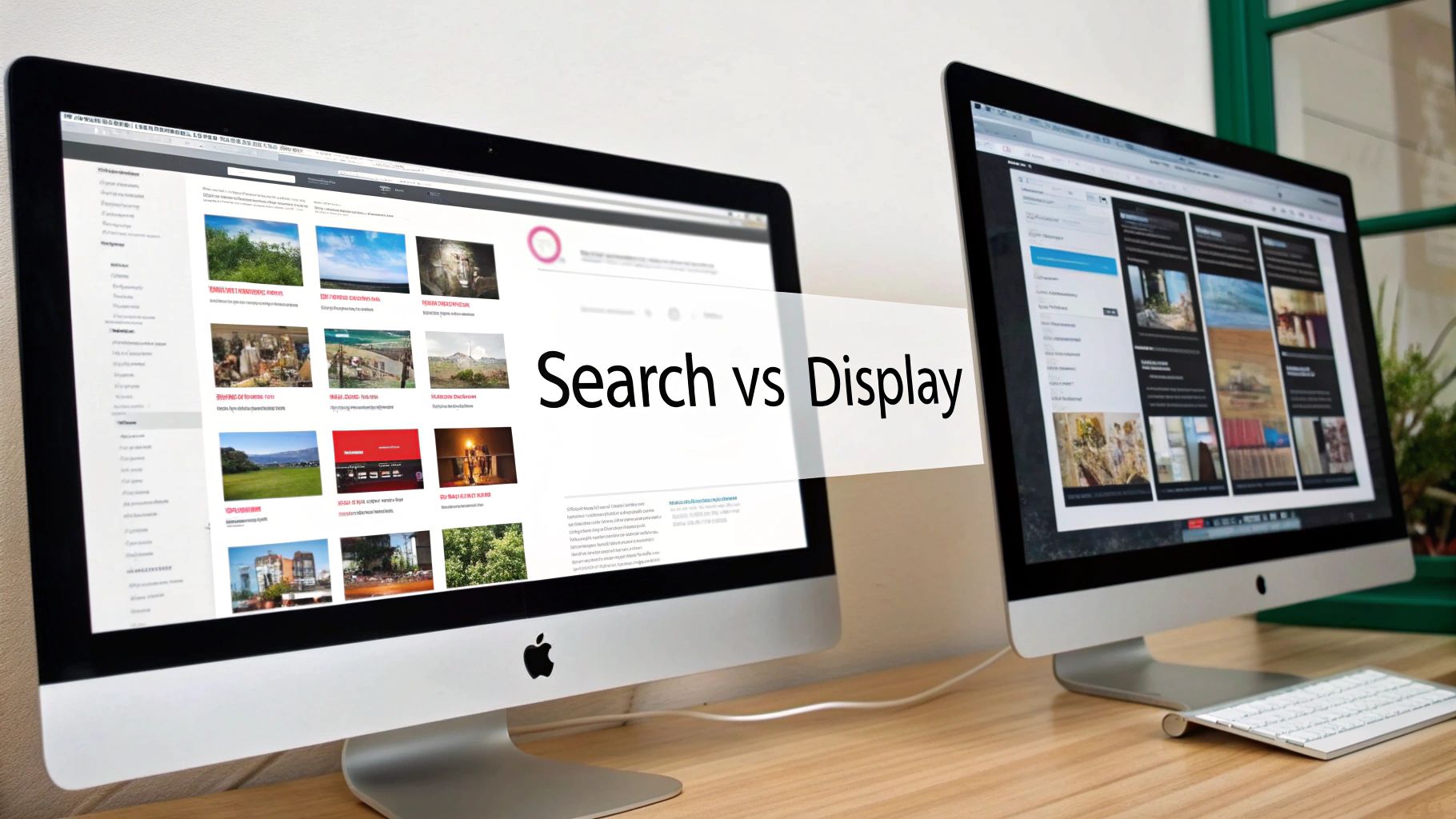
This is where strategy translates directly into results. It’s the difference between a campaign that sinks and one that soars. Knowing when to deploy Search Ads versus Display Ads isn't about picking the "better" platform—it's about picking the right tool for the job you need to get done right now.
The real strategic thinking in the search ads vs. display ads debate comes down to your immediate goal. Are you capturing existing demand or creating new demand? Answering that one question ensures your budget is put to work, not just spent.
Scenarios Built for Search Ads
Search Ads are your front-line soldiers for capturing immediate, high-intent demand. When a customer knows they have a problem and are actively hunting for a solution on Google, you absolutely must be there. This is about converting active buyers, not trying to persuade passive browsers.
An experienced consultant will almost always recommend a search-first approach in these situations:
Emergency Services: Think plumbers, locksmiths, or urgent IT support. The customer has a pressing need, and their first move is to search for immediate help. Missing out on these "I need it now" keywords is like refusing to answer a ringing phone.
Targeting Competitor Weaknesses: Does a major competitor have a higher price point or a known flaw? You can run surgical search campaigns targeting their brand name plus terms like "alternative" or "cheaper." This tactic intercepts users who are already in the market and on the verge of making a decision.
High-Consideration B2B Services: For companies selling complex software, professional services, or high-ticket items, search ads let you answer specific, bottom-of-the-funnel questions. You’re capturing leads who are past the initial research phase and are actively comparing vendors.
When to Deploy Display Ads
Display Ads are your long game. They excel at building brand awareness, educating a market, and creating the demand that your Search campaigns will eventually capture. This is how you introduce an idea or stay top-of-mind with a specific audience before they even realize they need you.
The real power of Display comes from its ability to create your next customer. It plants the seed of your brand in their mind long before they ever think to type your product category into Google. It’s an investment in future demand.
Display becomes the obvious choice in these scenarios:
Launching an Innovative Product: When your product is genuinely new and nobody knows to search for it, display ads are mission-critical. You can introduce your solution to custom-built audiences based on their interests and online behavior, effectively creating your own market from scratch.
E-commerce Promotions: For visually driven products like fashion, home decor, or consumer electronics, display ads are a natural fit. They're perfect for showcasing your items and promoting sales to people who have shown interest in similar products or brands.
Powerful Remarketing: This is one of the highest-ROI tactics in any playbook. By showing display ads to people who have already visited your website, you re-engage warm leads and gently guide them back to complete a purchase. This strategy alone can provide a significant, immediate boost to your conversion rates.
Scenario-Based Ad Type Recommendation
To make it even clearer, here’s a quick-reference table that maps common business goals to the most effective ad type. Think of this as your strategic cheat sheet.
Business Goal / Scenario | Primary Recommendation | Why It Works Best |
|---|---|---|
Generate Immediate Sales for a Known Product | Search Ads | You're capturing users who are actively searching for what you sell. The intent is high and the path to conversion is short. |
Increase Brand Awareness for a New Company | Display Ads | You can reach a broad but relevant audience to introduce your brand, build name recognition, and create future demand. |
Drive Leads for an Emergency Service | Search Ads | Urgency drives search behavior. You need to be the first and most visible solution when someone is in immediate need. |
Promote a Visually Appealing Product (e.g., Fashion) | Display Ads | Visual ads on relevant websites and apps allow you to showcase your product's aesthetics and inspire a purchase. |
Win Back Abandoned Shopping Carts | Display Ads (Remarketing) | Remarketing allows you to show specific product ads to users who have already shown interest, reminding them to complete their purchase. |
Target Users Researching Your Competitors | Search Ads | Bidding on competitor keywords + "alternative" or "review" allows you to intercept motivated buyers at the point of decision. |
Ultimately, many of the most successful strategies don't choose one or the other—they use both. Search captures the demand that Display creates, creating a powerful, self-reinforcing growth loop. The key is understanding which role each platform should play in your specific plan.
The Consultant Advantage Over a Bloated Agency
Figuring out the right mix of Search and Display ads is one thing. But who you trust to manage that investment is a completely different—and arguably more important—decision.
The real debate isn't just search ads vs display ads; it's about getting genuine expertise versus a generic, one-size-fits-all playbook. This is where the gap between a dedicated consultant and a bloated agency becomes impossible to ignore.
Big agencies have a nasty habit of passing your account to a junior manager who is probably juggling dozens of other clients. Their primary job isn't to obsess over your profit margins; it's to keep you on a retainer. What you get in return are templated strategies, sluggish response times, and reports packed with vanity metrics like impressions and clicks.
The Value of a True Partnership
When you work with a specialist consultant like me, you're working directly with the expert. There are no layers of bureaucracy, no account hand-offs, and no miscommunications. I'm the one in the trenches, managing every single aspect of your account.
When market conditions shift or a new opportunity appears, we can pivot in hours, not weeks. This speed and precision is something larger, slower agencies simply cannot match. It’s about being proactive, not just reactive.
This kind of partnership is built on personalized attention and a single, shared goal: improving your bottom line. We focus on what actually moves the needle.
Granular Optimization: I'm in your campaigns daily, making the small, data-backed adjustments that add up to significant, long-term gains in ROAS.
Transparent Reporting: You get crystal-clear reports that cut through the noise. We'll talk about Cost Per Acquisition and revenue—not fluffy numbers designed to hide poor performance.
Strategic Adaptation: We will constantly refine your strategy together, making sure every dollar is put to work where it can generate the highest possible return.
My commitment is to your growth, not an agency's monthly quota. You aren't just another number on a massive client roster; you're a partner. If you're tired of the agency runaround and mediocre results, it might be time to see why hiring a senior Google Ads consultant beats working with a bloated PPC agency. This is how you stop treating ad spend like an expense and start turning it into a powerful engine for growth.
Frequently Asked Questions
When you're navigating the world of Google Ads, things can get complicated fast. But once you grasp the fundamental differences between Search and Display, most of the confusion clears up. Here are the straight-up answers to the questions I hear most often from clients, minus the fluff.
Can I Run Both Search and Display Ads at the Same Time?
Absolutely. In fact, most sophisticated strategies demand it. Thinking of search ads vs display ads as an either/or decision is a rookie mistake. A seasoned pro uses them together to create a powerful growth loop that feeds itself.
You use Display Ads to build brand awareness and spark that initial interest. Then, when people are ready to buy and start searching, your Search Ads are right there to capture that demand. It's about making them work in concert, not in competition.
Which Is Better for a Small Budget?
If you're working with a small or limited budget, Search Ads are almost always the best place to start. The logic is simple: you're putting your money in front of people who are actively looking for what you sell. This gives you the most direct and measurable path to generating leads or sales right away.
Big agencies often push complex, multi-channel strategies from day one, but that just spreads a small budget too thin. My priority is your immediate ROI, which means focusing every dollar on high-intent users first to prove the model before we scale.
The consultant advantage lies in disciplined budget allocation. We don't throw a small budget at multiple channels hoping something sticks. We focus it on the highest-probability channel—Search—to generate profit, then we expand.
Why Are Display Ads So Much Cheaper per Click?
Display Ads have a much lower Cost-Per-Click (CPC) because the user’s intent is worlds apart from Search. You're essentially interrupting someone while they're browsing an article or watching a video, not answering a direct question they just typed into Google.
Because the intent is lower, the value of that click is perceived as lower, and the cost reflects that. Don't get mesmerized by cheap clicks. A mountain of low-cost, low-intent clicks from a poorly managed Display campaign can drain your budget and deliver zero results. It’s never about the cost of the click; it’s always about the value of the conversion.
Ready to stop guessing and start building a profitable Google Ads strategy with an expert who is personally invested in your success? Come Together Media LLC cuts through the agency bloat to deliver results. Schedule your free, no-obligation consultation today.




